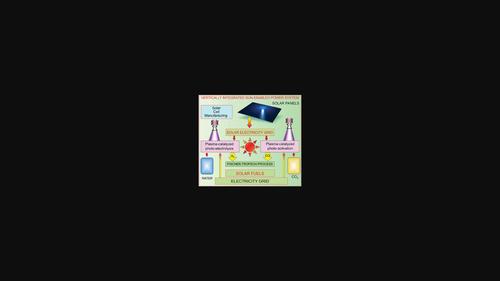当前位置:
X-MOL 学术
›
Glob. Chall.
›
论文详情
Our official English website, www.x-mol.net, welcomes your feedback! (Note: you will need to create a separate account there.)
How to Survive at Point Nemo? Fischer–Tropsch, Artificial Photosynthesis, and Plasma Catalysis for Sustainable Energy at Isolated Habitats
Global Challenges ( IF 4.9 ) Pub Date : 2023-12-04 , DOI: 10.1002/gch2.202300086 lgor Levchenko 1, 2 , Shuyan Xu 2 , Oleg Baranov 3, 4 , Kateryna Bazaka 1
Global Challenges ( IF 4.9 ) Pub Date : 2023-12-04 , DOI: 10.1002/gch2.202300086 lgor Levchenko 1, 2 , Shuyan Xu 2 , Oleg Baranov 3, 4 , Kateryna Bazaka 1
Affiliation

|
Inhospitable, inaccessible, and extremely remote alike the famed pole of inaccessibility, aka Point Nemo, the isolated locations in deserts, at sea, or in outer space are difficult for humans to settle, let alone to thrive in. Yet, they present a unique set of opportunities for science, economy, and geopolitics that are difficult to ignore. One of the critical challenges for settlers is the stable supply of energy both to sustain a reasonable quality of life, as well as to take advantage of the local opportunities presented by the remote environment, e.g., abundance of a particular resource. The possible solutions to this challenge are heavily constrained by the difficulty and prohibitive cost of transportation to and from such a habitat (e.g., a lunar or Martian base). In this essay, the advantages and possible challenges of integrating Fischer–Tropsch, artificial photosynthesis, and plasma catalysis into a robust, scalable, and efficient self-contained system for energy harvesting, storage, and utilization are explored.
中文翻译:

如何在尼莫角生存?费托合成、人工光合作用和等离子体催化在孤立栖息地提供可持续能源
荒凉、难以到达且极其偏远,就像著名的难以到达的极点,又名尼莫点一样,沙漠、海洋或外太空中的偏僻地点很难让人类定居,更不用说在那里繁衍生息。一系列难以忽视的科学、经济和地缘政治机遇。定居者面临的关键挑战之一是稳定的能源供应,以维持合理的生活质量,并利用偏远环境带来的当地机会,例如丰富的特定资源。这一挑战的可能解决方案受到往返此类栖息地(例如月球或火星基地)的运输难度和高昂成本的严重限制。在本文中,探讨了将费托合成、人工光合作用和等离子体催化集成到一个强大的、可扩展的、高效的独立系统中以进行能量收集、存储和利用的优点和可能的挑战。
更新日期:2023-12-04
中文翻译:

如何在尼莫角生存?费托合成、人工光合作用和等离子体催化在孤立栖息地提供可持续能源
荒凉、难以到达且极其偏远,就像著名的难以到达的极点,又名尼莫点一样,沙漠、海洋或外太空中的偏僻地点很难让人类定居,更不用说在那里繁衍生息。一系列难以忽视的科学、经济和地缘政治机遇。定居者面临的关键挑战之一是稳定的能源供应,以维持合理的生活质量,并利用偏远环境带来的当地机会,例如丰富的特定资源。这一挑战的可能解决方案受到往返此类栖息地(例如月球或火星基地)的运输难度和高昂成本的严重限制。在本文中,探讨了将费托合成、人工光合作用和等离子体催化集成到一个强大的、可扩展的、高效的独立系统中以进行能量收集、存储和利用的优点和可能的挑战。



























 京公网安备 11010802027423号
京公网安备 11010802027423号